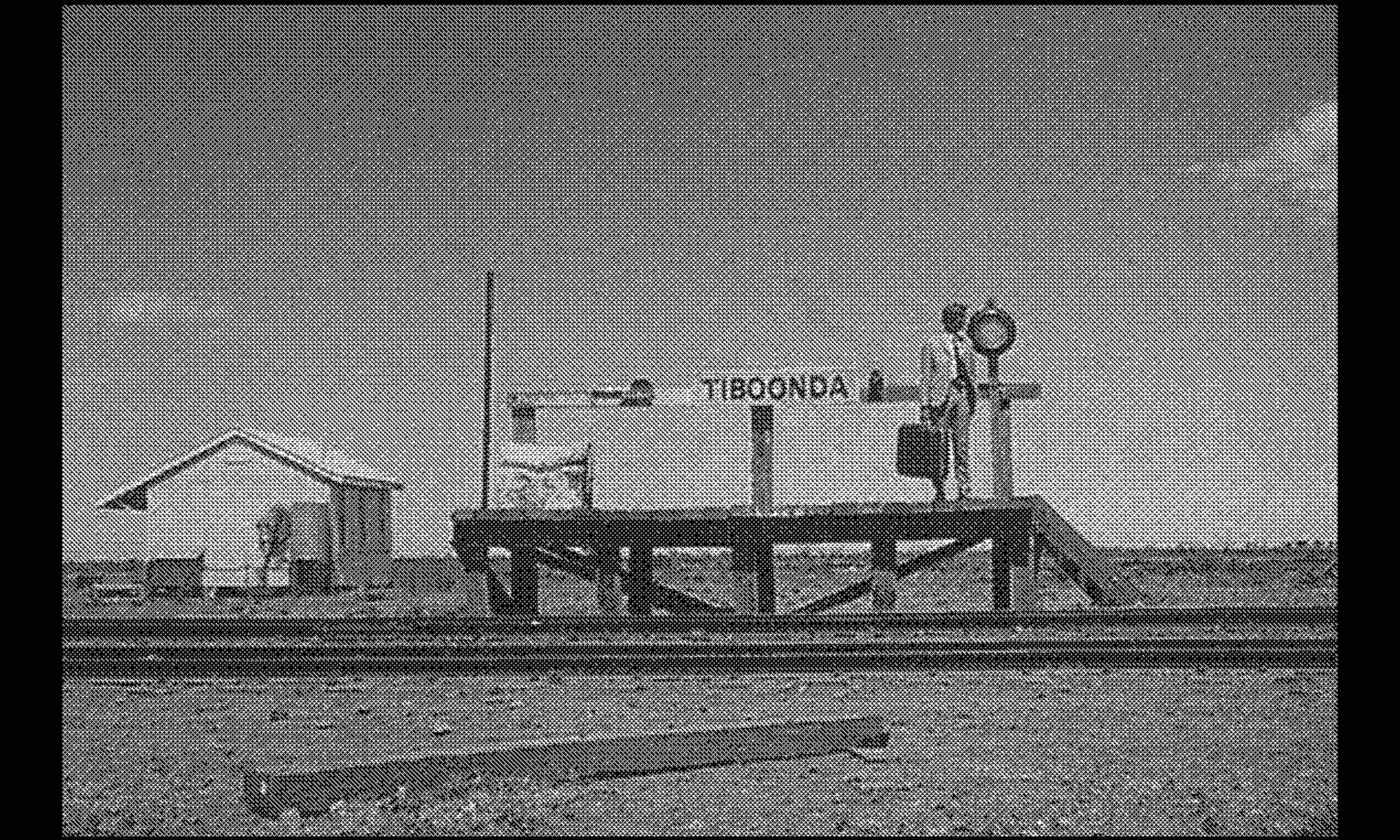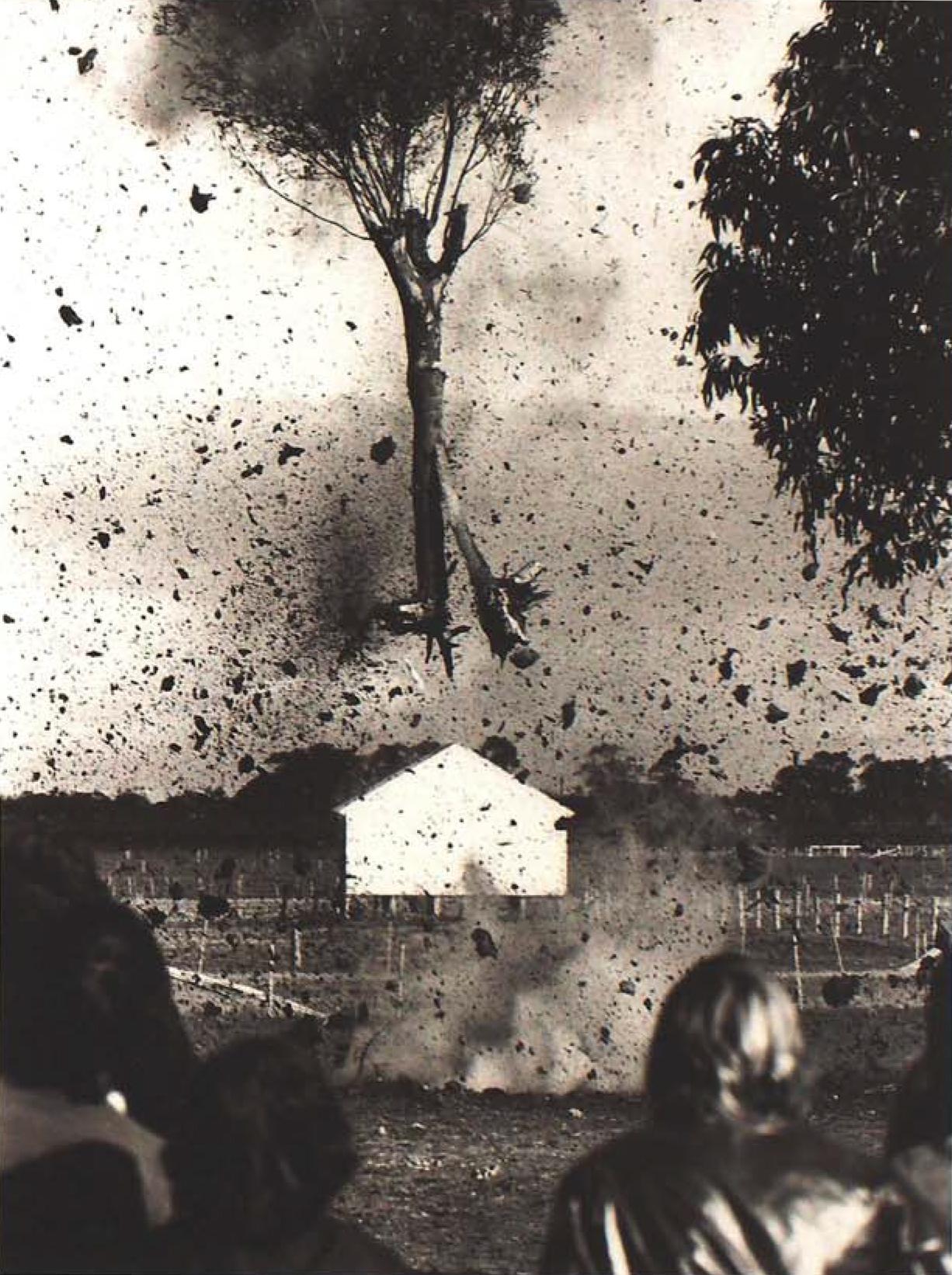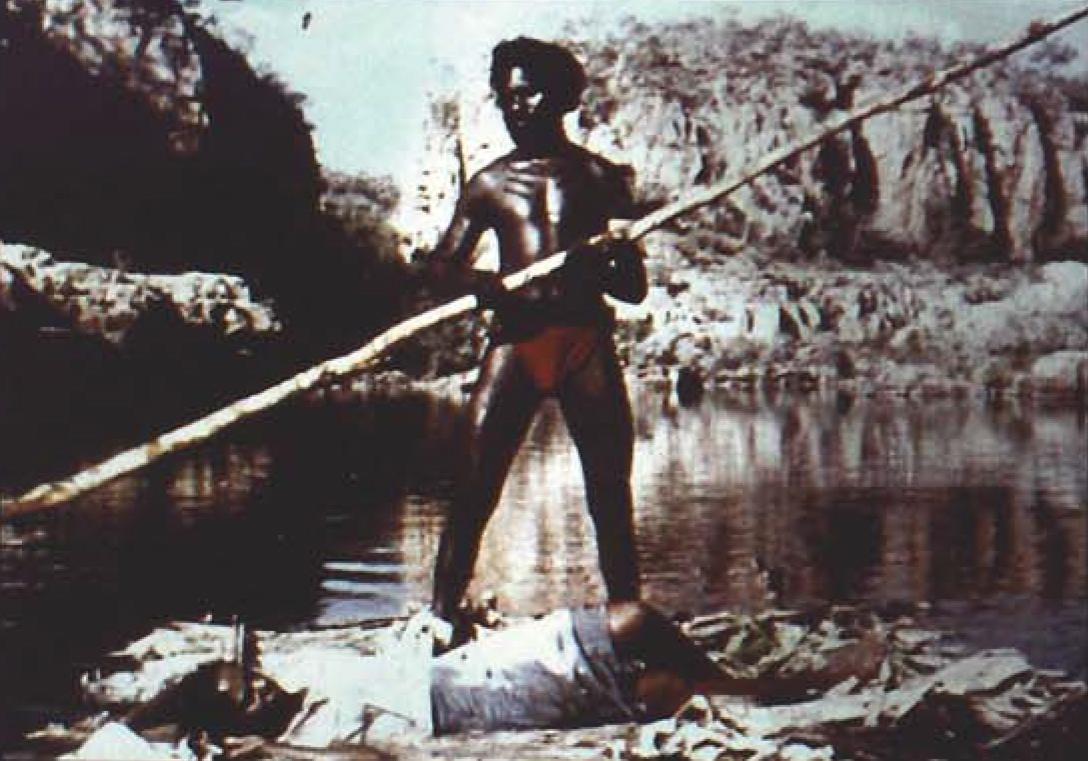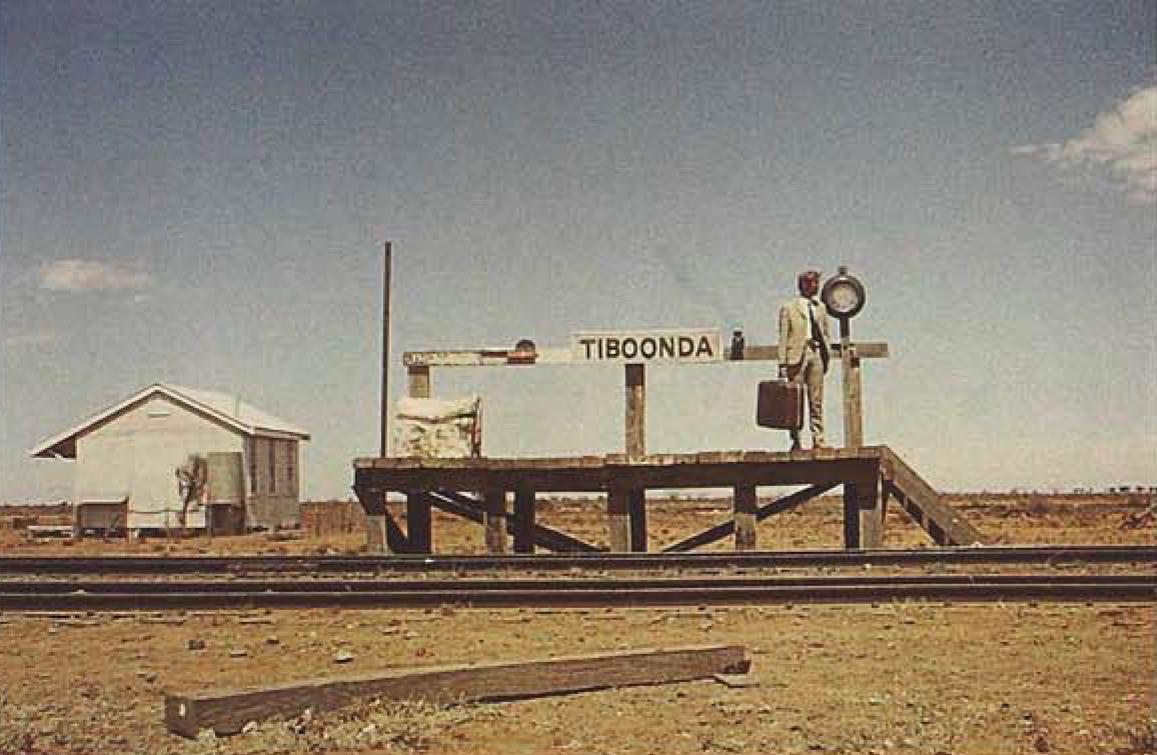The outback denier
This interview first appeared in the Summer 1976 issue of the journal South by Southwest published by the departments of English and History at the University of Melbourne. At times brutal, it is a stark reminder of white Australia’s obsession with cultural ownership of the outback, and a timely example of the prodigious nature of Dr David Loeb’s once-contraversial theory of outback denial. With permission from the original publishers, we re-present sections of the infamous interview between Dr Loeb and his colleague Dr Katharina Graw, which was conducted in the West Tower of the John Medley Building at the University of Melbourne, Parkville campus in April 1975. Given white culture’s sustained interest in depictions and representations of the outback, it is timely to revisit this little-known but significant moment in Australian academia. [1]
Katharina Graw: David, you recently presented a paper at the History of Land Clearing Conference, where you argued that there is no outback in Australia, that even as a construct it is deceptive to use the outback as a metaphor for non-indigenous spiritual or cultural rituals. You went so far as to completely deny the existence of the outback, which is of course absurd, but I am intrigued at the genesis of this idea. Do you still stand by this claim?
David Loeb: There is no outback, Katharina. I have already stated this. What there is instead, is a short history of land clearing slapped on the back of identity issues that can only apply to Indigenous inhabitants. What I am referring to is representation. Anglo-Saxon artists and authors are not capable of making a meaningful contribution to Australian identity because it will always be a case of narcissism combined with aesthetics disguised as understanding. In the end, it’s meaningless. If I were to pursue this goal, this goal of constructing a discourse for Australianness, I would need to avoid the mythical history of the landscape, at least the ones Anglo-Saxon inhabitants constructed in the nineteenth century. Obviously Australia is a construct—it’s a colony. It must always be considered that we are not at one with this land. Perhaps this can be called postcolonialism, a theory of something that comes after the colonial mentality has collapsed. But this postcolonialism will probably never occur if artists and authors continue to reinforce myths of the outback. When you look at cinematic examples such as Jedda (1955) or Wake in Fright (1971), how can they be considered in terms of identity and the outback—what do you think?
KG: Are you questioning whether these films are simply metaphors for psychological isolation? Or do you see something more sinister going on, where, perhaps, a myth is perpetuated and Aboriginality is denied? In Wake in Fright, the protagonist, John Grant (Gary Bond), finds himself having made a pact with the devil, so to speak, where in exchange for his education he must teach in a small, arid, perhaps imagined, outback. Seemingly trapped in a drug-induced, alcohol-fuelled hunt-or-be-hunted terrain, Grant attempts suicide and then escape, but the truck he leaves on delivers him back to the town from which he is absconding. The portrayal is that the town is ‘outside of culture’ and the parable perhaps not too far removed from the original settlement of Australia—white, ‘cultured’ and ‘educated’ man attempts to conquer ‘wild’ frontier. I’m wondering what you think David? Is there some sort of fissure in the narrative and representation?
DL: Fissure is polite, Katharina. In fact there is a lot you are saying that is polite, but what you were getting at in terms of the parallel between history and representations of the the outback in Wake in Fright is correct. There is a cultural problem both in imagining and actually experiencing this idea of the outback or frontier in Australia, if not in all settler and colonised societies: myths and stories are generated to justify the chain reaction of arrival, occupation, dispossession and then continued domination of Indigenous peoples and their land. Wake in Fright is an excellent example of how representations perpetuate the occupation, dispossession and continued domination of land in the ongoing construction of ‘our’ official history and national identity, where the outback is something to be conquered rather than known. The outback is not a place of life or, rather, of any life that is worth knowing. This is the representation and it is disturbing not only in its dystopic rendering but also in its negation of the other.
KG: It’s a big place—not everything can be known. Maybe there is a relationship between the inability to comprehend an expansive landscape with an average of 0.02 inhabitants per square metre and the inability to unravel some 60,000 years of history that predates white settlement.
DL: That’s the point—it’s the illusion of knowing that’s the problem; that, combined with worth and an imposed value system. Most depictions of the landscape present a digestible version of history: barren spaces and a romanticised landscape at times inhabited by ‘strong’ pastoralists and patronising visions of noble savages. They are renditions of a filtered experience that suggest a ‘nice’ history, or a dramatized notion as discussed previously, one that alleges or alludes to an honourable conquest of land and distance, rather than extravagant violence and violations of man and landscape. They are opportunistic appropriations colluding with a desire for home, place and identity. Representations such as these can only lead to the corrosion of public memory and thus a failure to reconcile with the past.
This failure, this corrosion, is exemplified in such legislation as the seven-decade White Australia Policy. It’s a type of repression that will lead to abnormality. In the primary phase, which I am going to suggest is invasion up until Federation (1788 – 1920), infants learn that some aspects of reality aren’t pleasant. They learn that both the pleasant and unpleasant are sometimes controllable and sometimes not. The natural assumption that all things are equal is repressed. Self and other, fear and desire, are determined and distinguished, which works as an analogy for white settlers and Indigenous peoples. In the second stage of repression, which might indeed cover Federation up until the recent dissolution of the policy (1901 – 1975), the child learns that acting on desires causes anxiety, leading to the repression of the desire. We are in, or heading towards, an abnormal cultural repression, or even a complex culturally neurotic behaviour, where this internalised anxiety will lead to a potentially illogical, self-destructive and antisocial society. This is evident in the forms of extreme nationalism and patriotism that are enforced and justified by the very representations we are talking about—they validate a desire to conquer and own without any identifiable threat. I’m describing this in a linear way, but it is of course a complicated, interlocking and concomitant process. Specificity of time and space are vital in our understanding of it; revealing and re-introducing the repressed aspects of Australian history are essential for a conscious awareness of place and identity.
KG: Well, that is a lot for us to swallow. If I were to take your position of the outback denier and run with it, how would I then account for the history of colonial representation of the landscape? Here I’m thinking of Australia’s pastoral painting tradition which ended with Sidney Nolan’s ‘Inland Australia’ series. These works have come to represent what is considered to be a greater Australianness than the representations made by the country’s original inhabitants. When we think about the avant-garde glimpsed in ‘The Field’ exhibition at the opening of the National Gallery of Victoria seven years ago, it is clear that representing the outback, or the mythologised Australia, is of little concern to Anglo-Australian artists, with the exception of those continuing the traditions of the sentimental pastoralists—the colonials, if you will. And when I think about the artefacts being made up north in Papunya, where that schoolteacher has started things, and how they are being mythologised, there emerges the potential for apologists to follow your lead. My point being, if you are making a claim to be the first outback denier, what is the future for the Australian myth?
DL: I am no apologist. The outback is a right-wing conservative myth stemming from an ideological impairment. Think of it as a conceptual and moral disability. Imagine someone presenting the idea that the conflict between Aboriginal Australians and white settlers had been fabricated, that the numbers of Aboriginal people killed and displaced was a politically motivated fraud. It is, of course, an absurd proposition. In light of that, my position of denying the existence of the outback could be considered little more than a furphy constructed to upset the moral right who continue to maintain this immoral and unethical myth of the Australian outback. They are denying the Aboriginal Australian by maintaining a landscape that is not lived. This landscape is simply unreal, and its perpetuation is irresponsible. Its continuation will eventually be of great social and cultural detriment.
KG: So by claiming to be an outback denier you are suggesting that any depiction of a mythologised outback is a condition unique to a far-right-wing racist attitude?
DL: Yes.
KG: And it is the clearing of land for agricultural profit that has perpetuated the outback myth, by making previously vegetative areas of land appear barren. There are great examples in Western Victoria, north of Horsham, past Manangatang and the areas south of the Mallee Cliffs National Park in New South Wales. These areas cleared for agriculture can be romanticised as being part of the harsh, barren, remote Australian outback.
DL: This is where my denial originates because it is hardly ever acknowledged in creative practices, or documentary for that matter, that the Australian outback is a cultural construction. Almost 75 per cent of the population live on the eastern littoral. There’s a psychological escape, a sea-route out. What can we find in this ‘accidental’ location? If there is no outback, there is no need for escape. No outback, no delineation. You know Katharina, I doubt there is an outback or frontier if you are Indigenous. The outback only exists when in someone else’s place. You arrive and deem the place and its inhabitants are in need of conquering. When the outback ceases to exist, so too does the desire to possess it. The need to dispossess its inhabitants is emasculated and what is repressed can be freed. After that, inclusive and fluid ideas can be explored and more interesting representations of actual, lived culture will result.
[1] All characters appearing in this work are fictitious. Any resemblance to real persons, living or dead, is purely coincidental.
Written by Lisa Radford and Jarrod Rawlins, this article was originally published in Art + Australia (48.1) Spring 2010.




